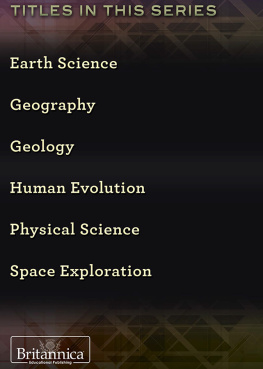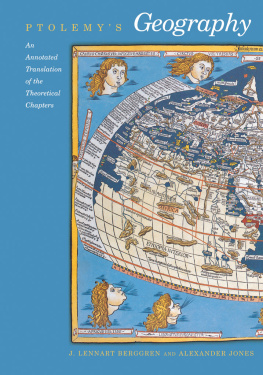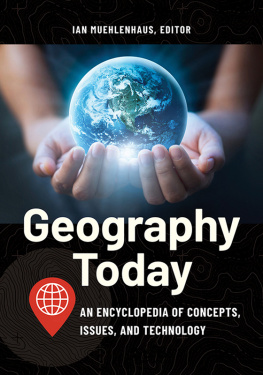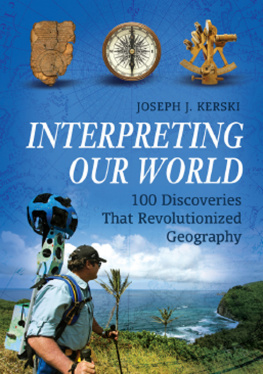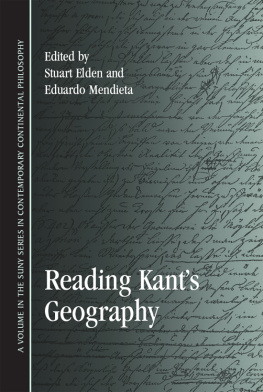ROUTLEDGE LIBRARY EDITIONS:
SOCIAL AND CULTURAL GEOGRAPHY
Volume 2
THE MAKERS OF
MODERN GEOGRAPHY
THE MAKERS OF
MODERN GEOGRAPHY
ROBERT E. DICKINSON
First published in 1969
This edition first published in 2014
by Routledge
2 Park Square, Milton Park, Abingdon, Oxon, OX14 4RN
and by Routledge
711 Third Avenue, New York, NY 10017
Routledge is an imprint of the Taylor & Francis Group, an informa business
1969 Robert E. Dickinson
All rights reserved. No part of this book may be reprinted or reproduced or utilised in any form or by any electronic, mechanical, or other means, now known or hereafter invented, including photocopying and recording, or in any information storage or retrieval system, without permission in writing from the publishers.
Trademark notice: Product or corporate names may be trademarks or registered trademarks, and are used only for identification and explanation without intent to infringe.
British Library Cataloguing in Publication Data
A catalogue record for this book is available from the British Library
ISBN: 978-0-415-83447-6 (set)
eISBN: 978-1-315-84860-0 (set)
ISBN: 978-0-415-73130-0 (Volume 2)
eISBN: 978-1-315-84859-4 (Volume 2)
Publishers Note
The publisher has gone to great lengths to ensure the quality of this reprint but points out that some imperfections in the original copies may be apparent.
Disclaimer
The publisher has made every effort to trace copyright holders and would welcome correspondence from those they have been unable to trace.
The Makers of
Modern Geography
by
ROBERT E. DICKINSON
First published 1969
by Routledge & Kegan Paul Limited
Broadway House, 6874 Carter Lane
London, E.C.4
Printed in Great Britain
by C. Tinling & Co. Ltd
Liverpool, London & Prescot
Robert E. Dickinson 1969
No part of this book may be reproduced
in any form without permission from
the publisher, except for the quotation
of brief passages in criticism
SBN 7100 6288 5
To
Mary
Contents
Leaders of the First Generation:
Friedrich Ratzel |
Leaders of the First Generation:
Ferdinand von Richthofen |
The Second Generation:
Pupils of Vidal de la Blache |
List of Plates
Between pages 146 and 147
Henri Baulig
Raoul Blanchard
Jean Brunhes
Albert Demangeon |
Emmanuel de Martonne
Robert Gradmann
Hugo Hassinger
Alfred Hettner |
Alexander von Humboldt
Hermann Lautersach
Joseph Partsch
Albrecht Penck |
Ferdinand von Richthofen
Carl Ritter |
Otto Schlter
Maximilien Sorre
Carl Troll
Leo Waibel |
Acknowledgements
Acknowledgements are due to the Association of American Geographers for permission to reproduce a quotation from The Nature of Geography, by R. Hartshorne, 1939, and to the following for permission to include the photographs:
Berichte (Partsch).
Bildarchiv d. sterreichische Nationalbibliothek (Von Humboldt).
British Museum (Frontispiece).
Cahiers de gographie de Qubec (Blanchard).
Deutsche Rundschau fr Geographie und Statistik (Ratzel).
Erdkunde Archiv fr wissenschaftliche Geographie (Troll and Lautersach).
Facult des Lettres de Strasbourg (Baulig).
Heidelberger Geographische Arbeiten (Hettner).
Institut de Gographie (Sorre).
Institut fr Landeskunde (Gradmann, Hassinger, Penck, Philipson, Schlter and Waibel).
Manchester University Press: Freeman The Geographers Craft (Vidal de la Blache).
Royal Geographical Society (Ritter and von Richthofen).
The purpose of this book is to trace the development of modern geography as an organised body of knowledge in the light of the works of its foremost German and French contributors.
Geography as an explicitly defined field of knowledge is more than two thousand years old. The writings of Ptolemy and Strabo contain clear statements of basic geographical concepts, though we should always remember (as classical scholars so often forget) that their theoretical views, like those of their successors until our own day, suffered from a lack of factual information and maps about the lands, seas, and peoples of the earth that were the subject of their writings.
With the works of the early scholars, however, I am not directly concerned. Our purpose is to trace the development of geography over the past one hundred years or more. In this period it has experienced a quite prodigious development, as is evidenced by its full recognition in Universities throughout the civilised world, and by the activities of professional societies and international organisations.
Such being the purpose of the book, I may briefly outline its contents. The founders of modern geography were by international acclaim Alexander von Humboldt and Carl Ritter in the first half of the nineteenth century. There was a period thereafter that lasted for several decades (essentially the third quarter of the century) in which the geography of Ritter was treated in both Germany and France as an adjunct of history. The subject was of wide popularity in the field of exploration and was recognised as worthy of status in the University in the last quarter of the centurya development due both to the advancement of knowledge as well as to an active phase of colonial expansion in both countries.
The first chairs were established in the last quarter of the century and their holders were thus the first generation of University geographers. The leaders were Ferdinand von Richthofen and Friedrich Ratzel.
The second generation were students or followers of the first and their careers overlap with their teachers and their first pupils. This group includes Vidal de la Blache in France; Albrecht Penck, Alfred Hettner, Otto Schlter and Joseph Partsch in Germany; Haiford Mackinder in Britain; William Morris Davis in the United States; and Sten de Geer in Sweden. Their period of professional activity extends from the last two decades of the nineteenth century to the end of the first quarter of the twentieth century. All of them in the first part of their careers were contemporary with the elder masters, but remained at their posts for about twenty years after.
The third generation, which has many distinguished names, embraces the pupils of these men, or students who were greatly influenced by them, or, in a few cases, others who entered the professional field as what the Germans call Autodiktaten, that is, self-trained geographers. The period of this generation roughly fills the second quarter of this century and their most active years were between the wars. It is, indeed, convenient in many ways to regard the second and third generations as separated by the hiatus of the First World War.
The fourth generation includes the scholars who began their careers between the wars, have been leaders over the past twenty or thirty years, and are now reaching the end of their careers or are already in, or approaching, retirement.



